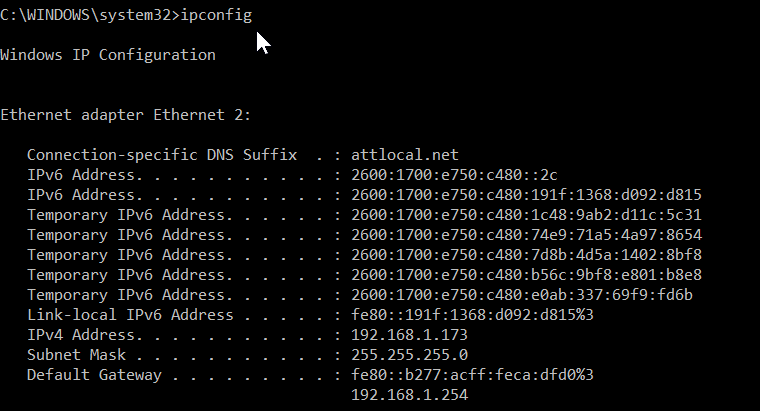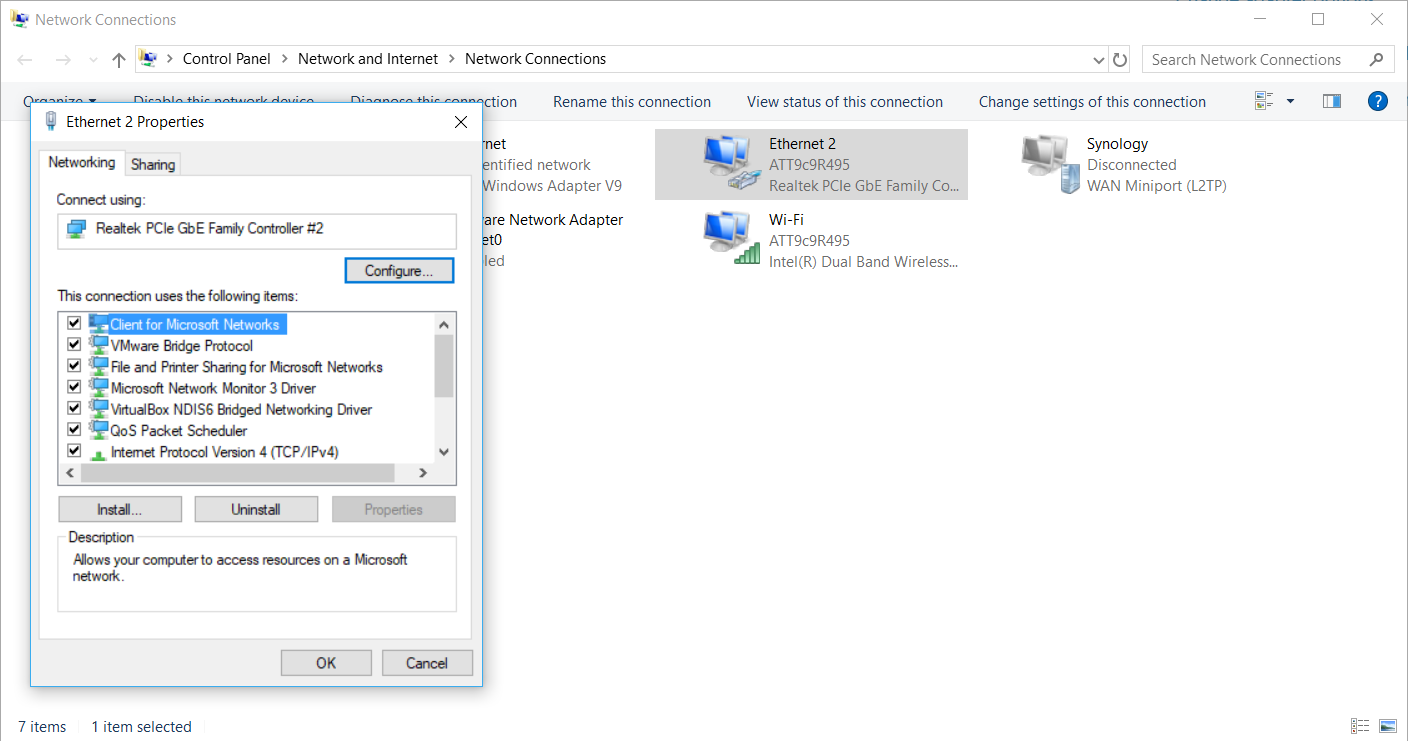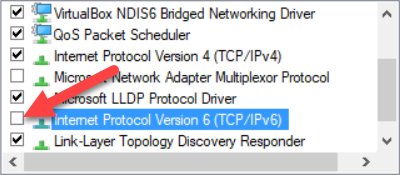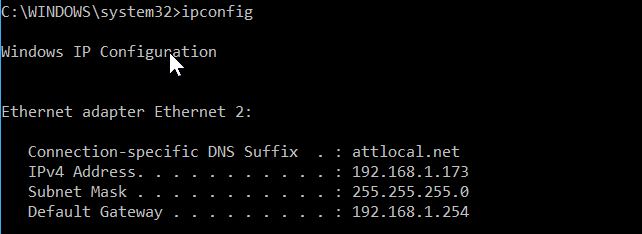|
Check out these additional IPv6 Resources: |
| Our IPv6 overview course at Udemy |
| Our IPv6 Custom Profiles for Wireshark |
| Our IPv6 classes at the Online School |
As more and more people are discovering IPv6, there is a tendency to test and play with the technology.
First, you can generically turn off IPv6 on an interface in Windows as follows (a little note here – disabling IPv6 on an interface does not turn off IPv6 within the operating system. If you want to do that in Windows look here) :
- Start by checking your system has IPv6 active by opening a CMD window and typing ‘ipconfig’:

We clearly see IPv6 is running on my system. - Right Click on your network icon in the task bar and select Open Network and Internet Settings.
- On the left item list select an interface, then on the right select Change Adapter Settings.
- Right click on the adapter you wish to modify, select Properties.

- Find the IPv6 and deselect the tic-box, then select OK.

- Now verify IPv6 addresses are not in place:

We clearly see IPv6 addresses are gone. - To turn it back on simply select the tic box and say OK.
Other operating systems have similar methods.
Being more specific, Windows and other OS systems come ready to play out of the box with pre-configured IPv6 Tunnels. These actions are usually harmless. For many network administrators, willingness to allow exploration balanced against risk of network threats is something they simply cannot live with.
So, if we are not fully compliant with IPv6 on firewalls and such, how can we disable the default IPv6 capabilities in Windows 7 as well as other OS’s?
- Use netsh to disable all IPv6 interfaces. This requires you open a Windows Command in ‘Run as Administrator’. You can include these commands in a script and send them inside a Microsoft System Center Configuration Manager (SCCM) package to disable transition technologies on targeted computers. Here is how you will disable all IPv6 transition technologies (Teredo, 6to4, and ISATAP):
- “netsh interface teredo set state disabled”
- “netsh interface ipv6 6to4 set state state=disabled undoonstop=disabled”
- “netsh interface ipv6 isatap set state state=disabled”
-
The problem with #1 is that this must be done on every computer, and a savvy user will find articles just like this one and reverse these commands (if they have the Administrative privileges). So another option is to configure Windows Firewall to block IPv6 traffic. You could block incoming and outgoing IPv6 protocol 41 (for ISATAP and 6to4) and UDP 3544 (for Teredo) traffic using the Windows Firewall, and you can use Group Policy to push this out to targeted computers. Businesses that implement perimeter firewalls may want to do this as a best practice for safeguarding their networks.
-
A third option is to disable the IP Helper service. This service must be running for IPv6 transition technologies such as ISATAP, Teredo, and 6to4 to function on the computer. This service provides automatic IPv6 connectivity over an IPv4 network, and if the service is stopped, the computer will have only IPv6 connectivity if it is connected to a native IPv6 network. Therefore, if your network is not native IPv6, disabling this service on Windows 7 computers effectively disables IPv6 on them. You can use Group Policy to disable this service on targeted Windows 7 computers.
Hopefully this is a good starting point. Good luck!
I hope you find this article and its content helpful. Comments are welcomed below. If you would like to see more articles like this, please support us by clicking the patron link where you will receive free bonus access to courses and more, or simply buying us a cup of coffee!, and all comments are welcome!

